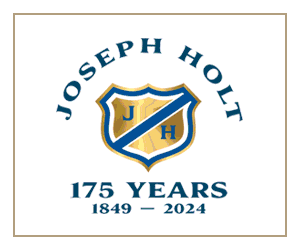Part two: Jonathan Schofield covers the years from 1066 to 1600, a time of slow growth and great change
Don't forget to read - Part one: the Romans cometh and goeth
After the Norman Conquest and for several hundred years following, Manchester was an important town regionally, but was never significant in the national picture. There was plenty going on and little pointers to its future significance but mostly it shared the slow and steady growth, with the odd setback, of so many similar towns across the country.
An annual fair was granted in 1222 and extended in 1227. This was to be held from the Eve of St Matthew (in other words, 20 September) for three days. The location was Acresfield, where St Ann’s Square presently sits. Salford was granted a charter in 1231 by Randulph de Blundeville, Earl of Chester making Salford a free or corporate borough. Fines were imposed by the charter that boosted the Earl’s finances such things as: ‘If any burgess shall in anger strike or beat any other burgess within the borough without shedding blood, he may make peace for himself in view of the burgesses, saving my right, viz., twelve pence.’
(NB: A burgess originally meant an inhabitant of a town or borough will full rights of citizenship, however, later came to mean an official.)
Curious, that the Salford charter should predate Manchester’s, which was already the far more significant town. Manchester finally got its charter in 1301, an important document that not only created the model for the town’s administration for several hundred years but also allowed the borough’s burgesses to pay a rent, rather than being obligated in the feudal way to give service to the local lords, the Grelley family. This was an important freedom which allowed them to carry on their own business without interference.
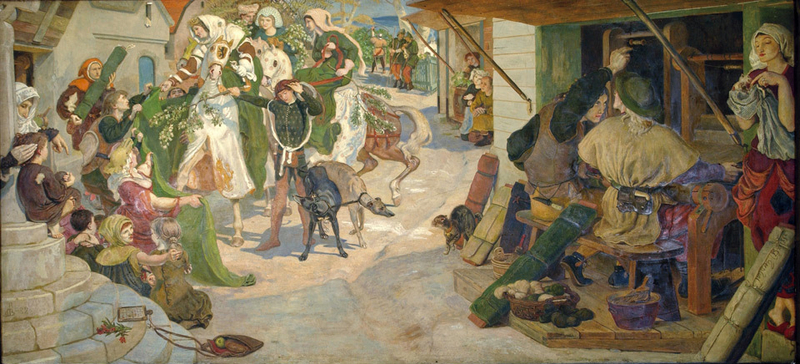
By this stage of the Middle Ages the economy of the town was already tending towards weaving and the production of textiles. As early as 1375, tradition states there was a colony of Flemish weavers in Manchester and this is commemorated in a charming way in the Ford Madox Brown mural of 1881 in Manchester Town Hall.
The Parish Church was enlarged to a Collegiate Church in 1421 and 1422, one with its own college of priests. This was instigated by Thomas de la Warre, Lord of the Manor, and rector of the church. A college was provided for the priests on the site of the old manor house and this now houses Chetham’s Library and School of Music.
Thomas died without children and the de la Warre barony passed through his half sister to Sir Reginald West, a man who made ‘two pilgrimages to Palestine’. A descendent of his, still bearing the title de la Warre, became an administrator in the English colonies in North America in the late 1500s, hence the present State of Delaware.
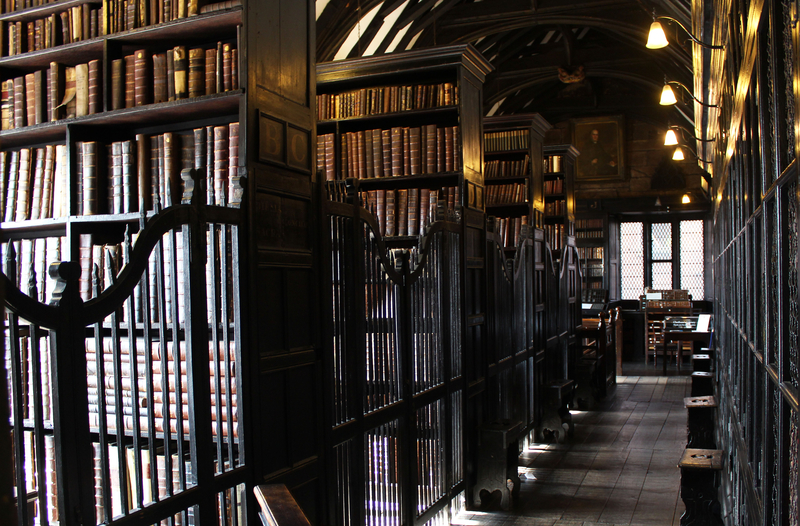
The most colourful of the early clerics was James Stanley, a son of the leading aristocratic family in Lancashire, the Earls of Derby, now perhaps most famous for Knowsley Hall and Safari Park. He was warden of Manchester and also the Bishop of Ely from 1506 to 1515. Stanley was apparently ‘the tallest man in England’ and said to be 6ft 7” tall.
Despite taking holy orders he was not a good scholar and loved breaking the priestly vow of celibacy. He certainly fathered illegimate children and he certainly lived with a woman, or two. He was a soldier and a huntsman and famous for cockfighting which meant he was a gambler. Oh and he was a drinker too. Probably. The Stanley family annals say: ‘He did end his life in merry Manchester, And right honorablye lieth he buried there in his chapel’.
In the year James Stanley died a grammar school was founded by Hugh Oldham, which later became Manchester Grammar School. This was to help improve education in ‘the county of Lancaster, where the children had pregnant wits, but had been mostly brought up rudely or idly, and not in virtue, cunning, education, literature, and in good manners.’
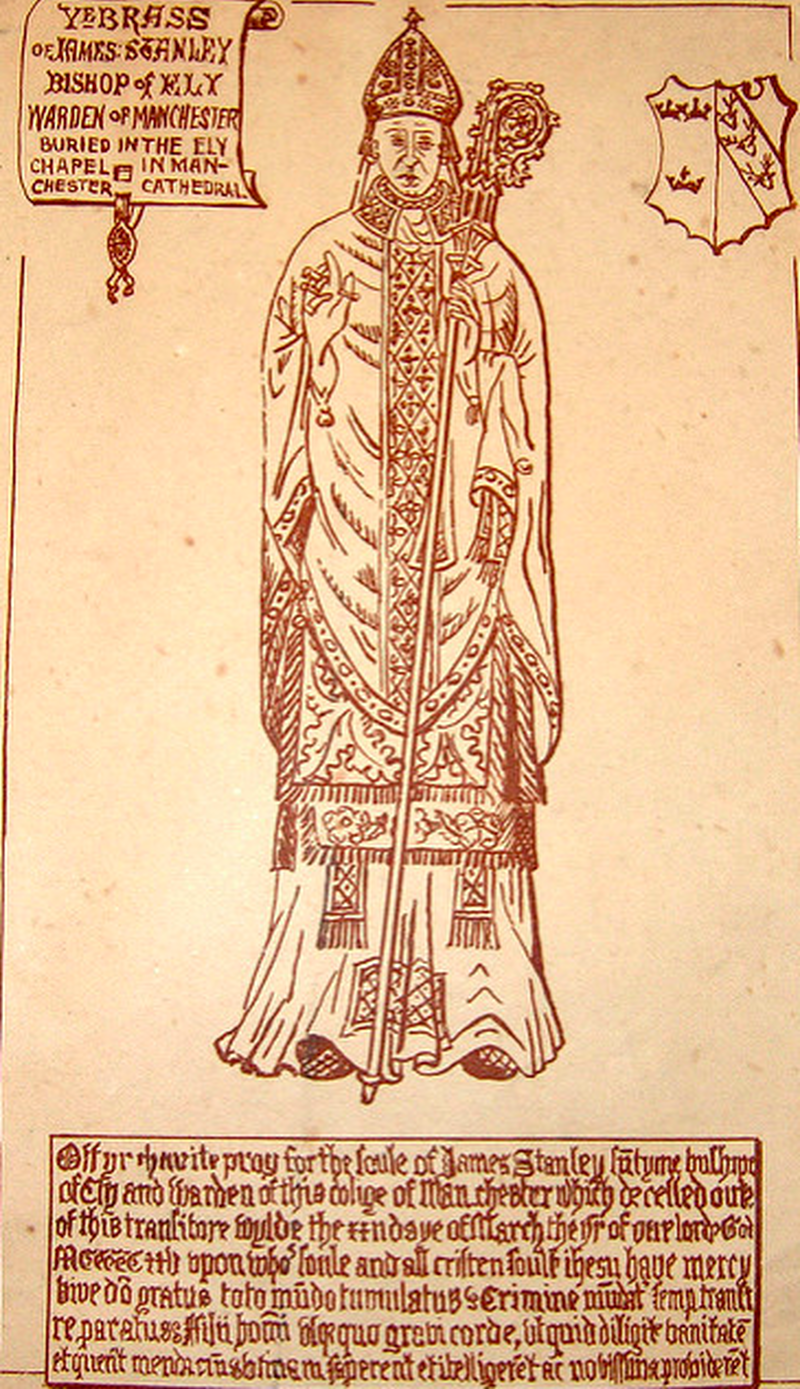
This was a time of great change as Henry VIII chucked the Pope out from his role as head of the established church and put himself in ‘the Vicar of Rome’s’ place. It was out with the old clergy and in with the Church of England. After the reign of Henry’s short-lived son, Edward VI, the Roman Catholic Church returned under Queen Mary, during whose reign Mancunian, John Bradbury, was burnt to death for heresy.
Then Elizabeth I came on the throne and followed on from her sister, but this time restoring the Church of England and persecuting Roman Catholics. This was the Reformation, a play ground for Christians to murder each other. The final national tally would be 300 Protestants to 63 Roman Catholics executed.
Despite, the troubled times, Manchester was growing.

In 1536, the prodigious traveller John Leland gave Manchester its first full profile in, to our ears, suitably antique English. He wrote:
‘Mancestre on the south side of the Irwell river stands in Salfordshire and is the fairest best built quickest and most populus town of all Lancashire, yet is in it but one parish church but is a college and almost throughout double laid whereof a goodly quarry is held by the town. There be divers stone bridges in the town but the best of three arches is over Irwell. This bridge divides Manchester from Salford, the which is a large suburb of Manchester. On this bridge is a pretty little chapel. The next is a bridge that is Irk river (although he says Thirke) on the which the fair built college stands as this is the very point of the mouth of it. For hard thereby it runs into the Irwell. On Thirke river be divers fair mills that serves the towns.
'In the town be two fair market places and almost two fleet shots without the town, beneath on the same side of Irwell yet be seen the dikes and foundations of old man castel in the ground now enclosed. The stones of the ruins of the castle were translated into making of bridges for the town. It is not long since the church of Manchester was collegiate. The town of Manchester stands on a hard rock of stone as Irwell as well appears in the west part has been noyful to the town. Irwell is not navigable but in some places for fords and rocks.’
The town in 1540 was granted the right of sanctuary meaning the church ‘place of privilege and sanctuary for term of life, to all offenders and malefactors, of whatsoever quality, kind, or nature their offence might be, for which saide offences and crimes the peine and punishment of death should ensue by the statute laws and customs of the realme other than murder, rape, burglary, highway robbery, or wilfully burning any house or barn’. It was removed shortly after as it appears it became a magnet for baddies from far and wide which interfered with its growing industry ‘making of clothes as well of linen as of woollen'.
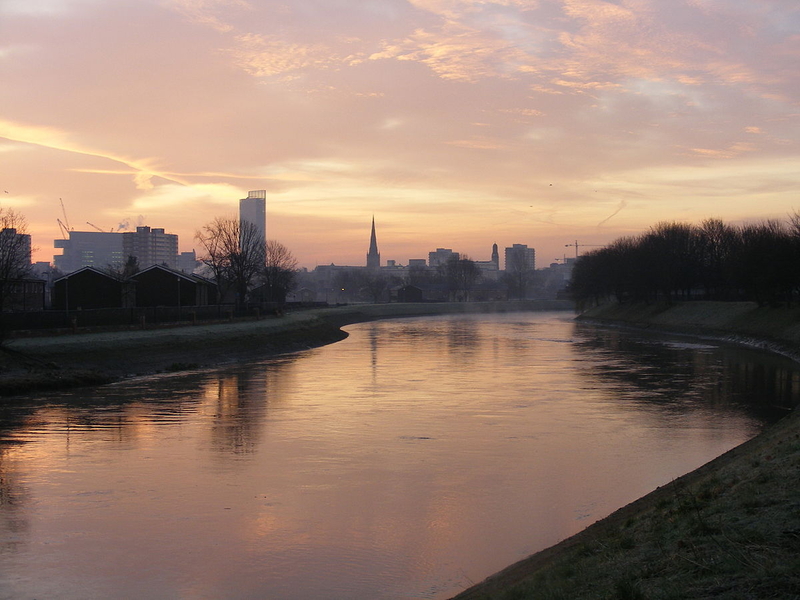
The administration of the town was now in the hands of a body called the Court Leet who had all manner of nuisance and dispute to attend to including pigs in the streets, overflowing cesspits and (from Manchester Confidential's point of view) the first mention of food and drink. In this case it was all about the rules and regulations governing the sale of alcohol.
Thus in 1561: ‘The Court Leet ordered that no manner of persons shall sell ale above 4d. out and 6d. in the house ; in default, 6s. 8d. fine. Also those that brew to sell ale and keep no inn, shall have a sign of the hand, which, so long as they have ale to sell, shall be put forth ; and when they have none, to be taken in. They shall deny no person ale for their money if the hand be out, under a fine of 6s. 8d.’
Drunks had to pay a fine or be thrown in the town dungeon, if they couldn’t pay the fine the ‘publican’ had to pay a fine. If the publican was drunk on his own premises then he spent a night in jail and was banned from alehouse keeping. It was deemed that Manchester need no more than thirty pubs, but then if the population was perhaps less than 4,000, that’s not too bad. Meanwhile Richard Kershaw was appointed the official wait (minstrel) of Manchester, attending ‘the wedding parties and otherwise discoursed sweet music’ for the town.
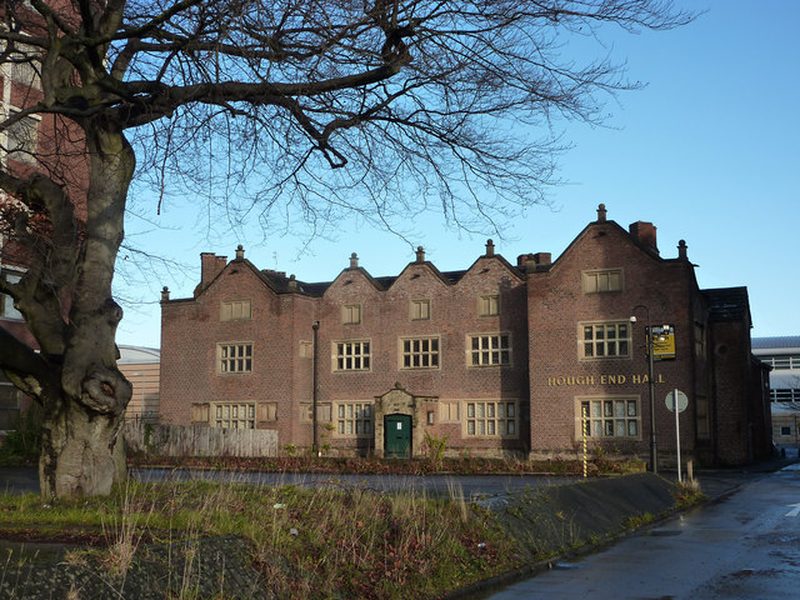
In 1596, Nicholas Moseley purchased the Manor of Manchester from John Lacy, citizen of London. ‘In conformity with a custom at that time prevalent, and it is stated, in compliment to his son Edward, then rising into note as a barrister, he changed his name from Moseley to Mosley, so that it might better harmonise with the motto he had recently adopted – ‘Mos legem regit’ (customer or precedent rules the law)’.
In 1599 he became the Lord Mayor of London and Queen Elizabeth I knighted him and presented him with a grand bedstead which he placed in his new posh house at Hough End. This still survives, a brick masterpiece surrounded by idiotic 1960s buildings.
Some of the region’s most moving and enchanting architecture survives from the years before 1600. There are several fine half-timbered halls such as Bramhall, Ordsall Hall and Hall I’th the Wood in Bolton. There is the more domestic scale Staircase House in Stockport. Pubs from period include Ye Olde Man & Scythe in Bolton, the Olde Boar’s Head in Middleton and the Old Wellington Inn in the city centre – the word ‘old’ or ‘olde’ is a giveaway.

Best of all are some of the splendid churches such as the parish church of St Michael, Ashton-under-Lyne and its set of late medieval stained glass depicting the life of St Helena. St Leonard, Middleton comes with Norman elements and one of the oldest war memorials (1524). Eccles Parish Church, Cheadle Parish Church and many others all repay a gander. But it’s Manchester Cathedral which captures the mood of the age best amongst the religious buildings. Its quire is a thing of beauty, skill, even impish humour. Last year photographer Robert Watson got up close to the ceiling as the upper areas were cleaned and relit. He captured more wonderful art including, whether you are religious or not, a face of Christ that is loaded with pure art and deeply moving.
In terms of enchantment, however, Thomas de la Warre’s college, now Chetham’s Library and School of Music, beats them all. There is a sense of timelessness about this building and a sense of enchantment too. Part of that might stem from the fact the most famous British alchemist lived there, John Dee.
The story of John Dee and the events leading up to and including the English Civil War will feature in the chapter three. Don't forget to read - Part one: the Romans cometh and goeth





